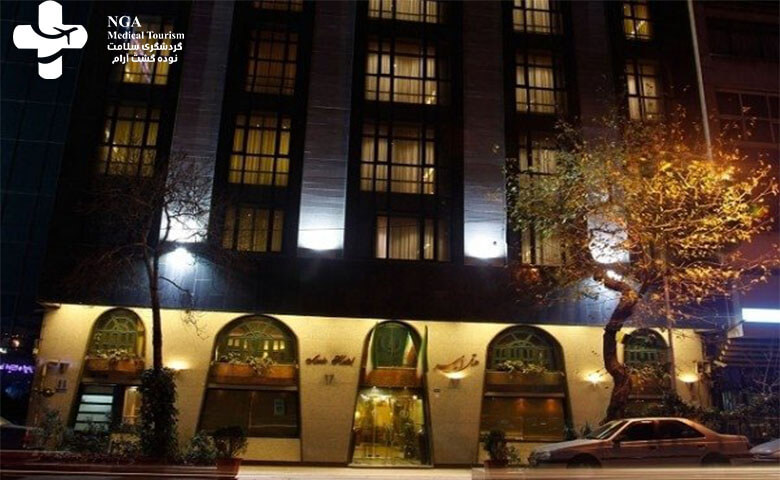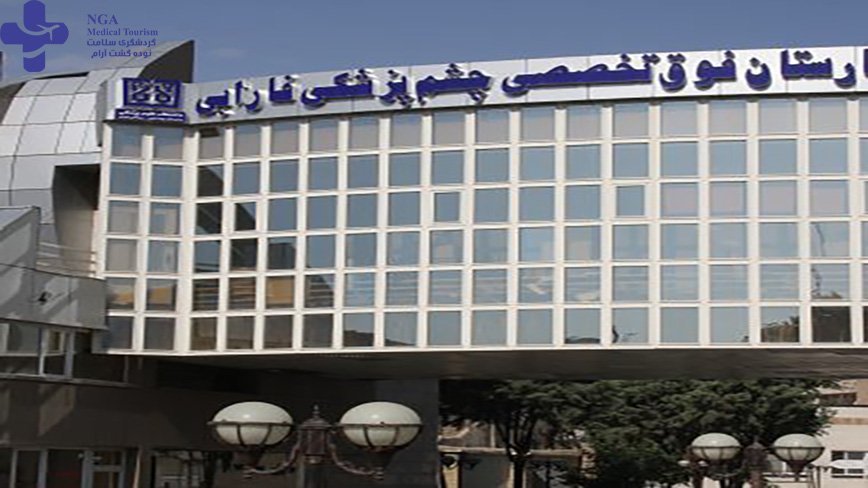
Physiotherapy clinic

Surgery and anesthesia services

Cardiovascular services
About Farabi Hospital in Iran in Iran/Tehran
In 1930, the Farabi Eye Hospital was established by Professor Mohammad Gholi Shams, who eradicated trachoma as the main cause of blindness in southern Iran. He performed the first vaccination in 1934 and established the Iranian Society of Ophthalmology in 1947, founding the first Iranian ophthalmology journal in 1968. The hospital was once the only eye hospital in the country and a major academic center for ophthalmology, and it remains one of the largest and most highly equipped centers for treating eye diseases in the Middle East. Equipment such as phacoemulsification, YAG and Excimer lasers, and Femtosecond laser are available at the center for performing surgical procedures. Farabi offers a variety of surgical services such as cataract surgery (lens emulsification/IOL implantation), Phakic IOL implantation, pterygium surgery (with amniotic membrane), PRK surgery, Femto LASIK surgery, triple procedure (lens implantation, extraction of cataract, lens implantation inside the eye), eyelid repair surgery, and ptosis surgery. Other facilities at the hospital include a skills lab, stem cell preparation unit, chemistry lab, genetics and ophthalmology lab, clean room, animal lab, nano lab for ophthalmology, protein and visual optics lab, and eye bank.
Specialized clinics in Farabi Hospital

Farabi Hospital’s ophthalmology department is distinguished by providing medical services for the treatment of eye diseases and performing eye surgeries using the latest technologies, thanks to a specialized team of doctors and nurses. Medical services in this department include various eye surgeries, laser eye surgery, diagnosis and treatment of eye diseases, and special eye tests and medical imaging. The ophthalmology department also provides analysis and diagnosis services for eye images and offers necessary consultations to patients to provide the necessary medical services for the treatment of eye diseases. Farabi’s ophthalmology department relies on advanced technology and a specialized team of doctors and nurses to provide high-quality medical services to patients.
Farabi Hospital is distinguished by its advanced medical equipment and qualified staff of doctors and technicians in the field of medical imaging, providing medical imaging services for the eyes using the latest technologies. Ophthalmic imaging services are provided in this department using advanced digital imaging devices such as OCT (optical retinal imaging) and fluorescein angiography (ocular color photography). Types of medical radiography of the eyes such as magnetic resonance imaging (MRI) and computed tomography (CT) are also offered.
Qualified staff in the Ophthalmic Imaging Department analyze and study the captured images and provide them to specialized doctors to make the necessary medical decisions. The images are also sent to doctors specializing in the fields of ophthalmology, neurology, and other related specialties.
Ophthalmic imaging services are provided at Farabi Hospital using advanced technologies and qualified personnel, ensuring high quality and accurate services for patients.


Corneal transplantation is a surgical procedure in which a portion of damaged or diseased corneal tissue is replaced with a healthy cornea from another person. To perform this procedure at Farabi Hospital, the following steps are taken:
1. Medical evaluation: Before corneal transplantation can be performed, it must first be determined whether the patient is a suitable candidate for surgery and the condition of the cornea and other factors that are important for the success of the procedure. For this purpose, the doctor performs tests including medical history, blood tests, eye examinations, and other requirements.
2. Source of the cornea: The source of the cornea can be from deceased individuals who have previously registered to donate organs legally in the event of their death. For this purpose, doctors work with relevant organizations to identify available resources and use them. Patients themselves or individuals who wish to donate their corneas can also sign an organ donation agreement.
3. Procedure: After the source of the cornea has been determined, the procedure is performed. At this stage, the doctor cuts the damaged cornea and transplants the new cornea using surgical techniques. Corneal transplantation can take several hours and the patient must remain under the care of the doctor.
4. Postoperative care: After the procedure, the patient should stay in the hospital for a few days so that doctors can monitor the condition of the cornea. The patient must follow the doctor’s instructions regarding medication and postoperative medical guidance. Additionally, the patient may need to regularly visit the doctor for several weeks or months after the surgery to examine the condition of the cornea.












